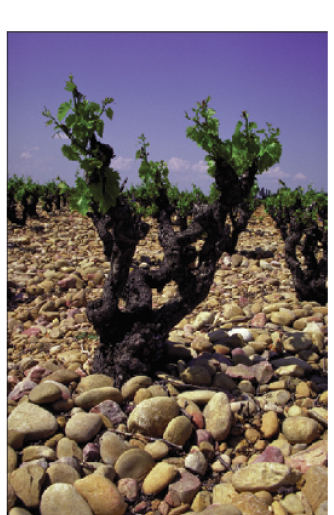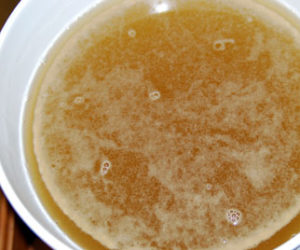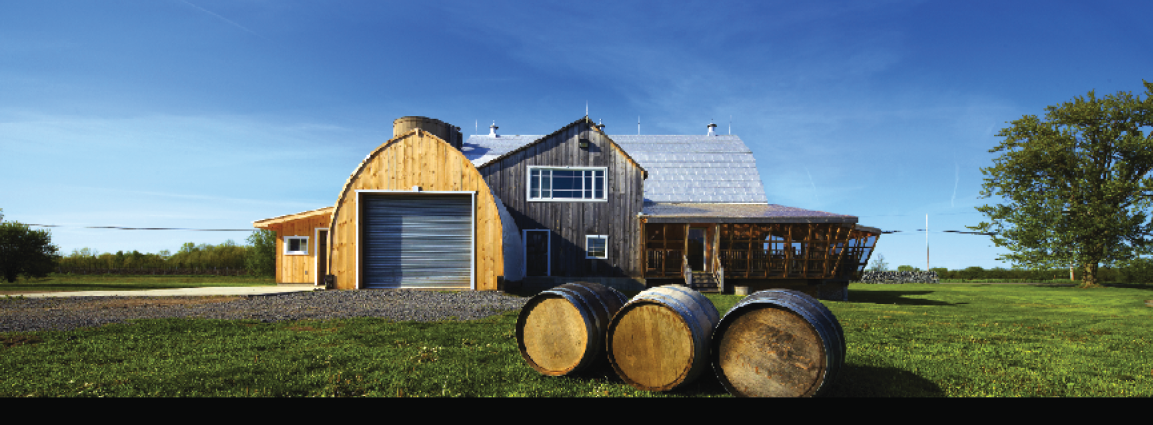 Mineral deficiencies or excesses can become sources of frustration for amateur winemakers because minerals, metals, and other ionic substances cannot be easily measured and their role in biochemical and chemical reactions can be quite complex.
Mineral deficiencies or excesses can become sources of frustration for amateur winemakers because minerals, metals, and other ionic substances cannot be easily measured and their role in biochemical and chemical reactions can be quite complex.
One of the most remarkable and visible effects of these substances are tartrate crystals resulting from wine containing a high potassium content and subjected to cold temperatures. Some less visible or less understood effects are stuck fermentation due to mineral deficiency or unusually premature or advanced phenolic browning — a condition whereby polyphenols are oxidized into their brown-colored forms.
So where do these substances come from and how can they be best managed in a home winery?
Ionic substances
Ionic substances, or ions, are atoms or molecules that have either gained or lost one or more electron and therefore carry a charge. Those that lose electrons become positively charged and are
called cations. Those that gain electrons become negatively charged and are called anions. For example, potassium (K) has a high tendency to lose an electron and is therefore found in its ionic form, K+; and when potassium metabisulfite (K2S2O5) is dissolved in water (H2O), it dissociates (splits) into K+, bisulfite (HSO3-) and sulfite (SO32-) ions. (The astute chemist will also point out the presence of hydrogen ions, H+, in this dissociation reaction.)
“Ionic substances” is the more general term although it is often used interchangeably with the term “minerals”; the latter can have various meanings.
“Minerals” refers to metal cations derived from alkali, alkaline earth and transition metals. For example, sodium and potassium are alkali metals and their ions are denoted as Na+ and K+; calcium and magnesium are alkaline earth metals and their ions are denoted as Ca2+ and Mg2+; and copper and iron are transition metals that can take on more than one charge, and their ions are denoted as Cu+, Cu2+, Fe2+ and Fe3+. Chemists may also include “heavy metals” in this definition, for example, lead (Pb) and mercury (Hg), which are deemed health hazards. And inevitably, enophiles then to relate the taste of minerality to an abundance of mineral content; see sidebar (on page 63) to join the debate.
The more general definition of “ionic substances” also includes important enological (non-metal) “poly atomic” anions, such as phosphate (PO43-) found in yeast nutrient preparations (e.g. di-ammonium phosphate, or DAP), and sulfites (HSO3-, SO32-). Also found in musts and wines are amino acids, the building blocks of proteins. These organic substances can change between charged and uncharged states. Amino acids can have both positive and negative charges on their ends and these are known as zwitterions.
Ionic substances occur naturally from soil and plant biology and chemistry, or from geographical and environmental factors, the use of vineyard fertilizers and pesticides, extent of mechanical handling at harvest, maceration regimen, exogenous additions of processing aids, and possibly from metal leaching from processing equipment. These substances can impact vinification, wine chemistry and quality; for example, some metal ions can catalyze oxidation reactions, bind with anthocyanins to affect color in red wines, or form salts by combining with suitable anions to cause colloidal instabilities. And there is a potential of detecting, albeit in trace amounts, substances known to have potential effects on human health, such as lead and cadmium, found in wines produced from grapes grown near urban areas.
Cations
Alkali and alkaline earth metals are the most significant naturally occurring cations distributed approximately 40% in the skin, 50% in the pulp and 10% in seeds. By far, K+ is the most significant by concentration, which can reach as much as 2-3 g/L, while Ca2+ can be found at levels of 80-140 mg/L, Mg2+ at 60-150 mg/L, Na+ at 10-40 mg/L, while iron and copper are the most significant in terms of negative enological effects, and are found at levels of 5-6 mg/L and less than 0.4 mg/L, respectively. Reds will tend to have higher levels since more cations are transferred to the juice during maceration.
K+ ions are important for the metabolism of all living cells. They are found abundantly in most soil types where they serve as nutrients in plant cells; they are a key component of some fertilizers. Potassium content then depends on soil type and the extent of fertilization as well as grape variety and ripeness. Other sources of potassium in winemaking include potassium metabisulfite and potassium-based deacidifying agents.
K+ can combine with bitartrate ions to form potassium bitartrate (KHT), which becomes insoluble at lower temperatures in ethanol; so potassium concentration is generally lower in wine compared to must. Polyphenols can inhibit KHT precipitation, hence why reds are more tartrate-stable than whites.
Mg2+ is the most critical mineral for yeast cell viability and growth, and a stress-free alcoholic fermentation; it is enzymatically used in glycolysis and in the conversion of glucose into acetaldehyde, the precursor to ethanol. Yeast with sufficient Mg2+ will ferment with reduced amounts of acetic acid and acetaldehyde, and increased amounts of citric acid and glycerol.
Ca2+ is the second most abundant mineral substance in grapes. Its content depends on soil type (e.g. as in limestone) and the extent of fertilization with agricultural products as well as grape variety and ripeness. Yeast only needs Ca2+ in tiny amounts, which are sufficiently found naturally in juice. Excessive Ca2+ can interfere with magnesium’s ability in supporting cellular functions or lead to increased higher alcohols, acetic acid, acetaldehyde and residual sugar, and reduced succinic and citric acids, causing an imbalance in wine.
Other potentially significant sources of Ca2+ include calcium-based bentonite in fining, calcium carbonate (CaCO3) used in reducing acidity, depth filter pads, inadequately treated concrete fermentation vats, and, quite often in kit wines, hard water. If your municipal water is hard, use distilled (deionized) water to reconstitute the juice in a wine kit.
Excessive Na+ in food may pose a health concern (hypertension), but levels found in wine are typically of no concern. By far the most damaging cations to wine are copper (Cu+/2+) and iron (Fe2+/3+) ions. These are always present in small amounts in juice and wine — Fe forms part of the Earth’s crust — but can be found at higher levels due to external factors, such as copper-based vineyard sprays, copper sulfate for treating hydrogen sulfide (H2S) smells, or leached from processing equipment. Tiny quantities of Cu/Fe ions can catalyze oxidation of colorless polyphenols into their brown-colored quinones, by oxidizing ethanol into acetaldehyde, or by causing colloidal instabilities such as turbidity (also known as casse).
Zinc (Zn) is needed in relatively small amounts where it serves as cofactor to a variety of yeast fermentation enzymes. Manganese (Mn) encourages formation of acetaldehyde, which goes on to react with polyphenols in oxidative reactions.
Many of these cations are critical to yeast’s performance, hence why dry cultured yeast should always be rehydrated in regular (but not hard) water; distilled water will kill the yeast.
Anions
The main anions of relevance in winemaking are sulfites, sulfates and phosphates. HSO3- and SO32- ions are the result of sulfite additions and yeast metabolism. HSO3- is most reactive towards carbonyl compounds, anthocyanins and other polyphenols such as quinones, as well as hydrogen peroxide (H2O2) resulting from oxidative mechanisms or from exogenous additions in attempts to lower bisulfite levels in excessively sulfited wines.
SO42- ions are in part the result of copper sulfate (CuSO4) vineyard sprays used to combat fungi or deal with H2S problems, from ammonium sulfate additions to provide yeast nutrients in must, or from the oxidation of sulfites by H2O2.
H2PO4-, HPO42- and PO43- ions are derived from vineyard fertilizers, phosphate salts, exogenous nitrogen sources in the form of ammonium salts (e.g. DAP) used as yeast nutrient supplements, and exogenous additions of phosphoric acid used for reducing pH. Excessive phosphate additions can react with iron to form ferric phosphate, an insoluble white casse known as phosphatic or ferric casse.
The chlorine anion chloride (Cl-) is typically only found in trace amounts in grapes and wine although it can reach important levels, up to 1 g/L, in grapes sourced from vineyards located in close proximity to the sea or where high-chlorine content tap water is used for preparing exogenous agents.
Pesticides, environmental pollutants and old (pre-stainless steel) winemaking products may introduce a host of cations and anions, many of which can have a negative impact on wine, be toxic or have physiological effects if not managed diligently.






